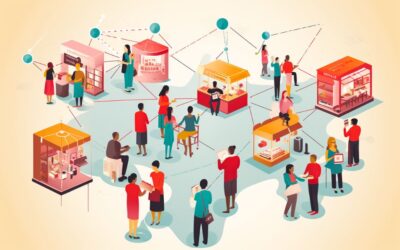Without encrypted data, it’s impossible to know whether your social network is on the right path. Adoption rates, engagement levels, and usage can vary a lot from one entity to another, so you can’t really extrapolate the data across the whole company. To manage your enterprise social network, the digital team needs to rely on indicators consolidated in a dashboard to have an overall view, if only to inform and reassure sponsors or, if not, to justify the fact that they need to remobilize them. Above all, however, it’s a means of making the right decisions.
Adjusting the support system
Last year, social protection company Humanis had to readjust its support system following an online survey of its 6,700 employees. The results revealed a difference in adoption between headquarters and its regional teams. Based on this observation, the company decided to localize actions throughout the entire network. This experience convinced the mutual insurance company to repeat the operation every 18 months to measure changes in terms of digital maturity and usage.
Employee surveys are rich in information, but they only provide a one-off insight, and just once or twice a year at best. In addition, they’re based on declarative data that does not always correspond to real practices. These two limitations are overcome by the operations data provided as standard by enterprise social networks or by specialized software that aggregates them into more advanced indicators.
Serving the dynamics of change
The first mission of the analytics team is to continuously feed data to an overall dashboard and monitor progress of usage. They are also used to measure the vitality of communities and identify particularly active and influential employees. Based on this data, the digital team is able to carry out targeted actions: helping a facilitator revive a waning community, identifying and sharing the best practices of a particularly active community, building up a library of practical cases to inspire the entire company, or recruiting ambassadors.
Community managers, too, seek steering indicators to measure the evolution of their community (total rollout can take over a year) and compare themselves to the rest of the company. The development of new uses is rarely as rapid as expected. Knowing that you’re on the average progression curve is an encouraging signal that encourages you to persevere.
Also read: M is for Management
Measuring contributions to business objectives
Calculating the return on investment of an enterprise social network is an illusion. The few attempts by software publishers, for example, to model productivity gains, have been inconclusive. However, companies have not given up trying to quantify the contribution of their collaborative workspaces to their bigger business objectives.
Since 2013, Schneider Electric has been surveying members of its different communities each year. They are invited to answer two questions: does the community bring tangible value to my business, my customers or me? Does it help me learn from my peers? Their answers feed into two indicators. Over the years, the model is refined. The results are now weighted according to the age of the community so as not to benefit the more recent ones, who already benefit from the novelty effect. These indicators are used to demonstrate to management and senior management that communities are generating value. They are also used to promote communities throughout the company.
Also read: Deploying an Enterprise Social Network: Tools and Methods for Driving Change
*
* *
Best practices
Deciphering numbers is crucial for making the best decisions. For example, increasing the size of a community doesn’t mean that it’s communicating with its audience. We must not only monitor the balance of arrivals and departures, but also take an interest in their scope and consider the vitality of uses. A community that struggles to retain its members will not succeed in developing new work practices in a sustainable manner. Technip has used analytics since the launch of the pilot phase of its enterprise social network. The figures have highlighted differences in behavior according to business lines. Having observed and measured these differences prompted the project leader to look for the causes in order to correct the situation before the platform was widely deployed.



